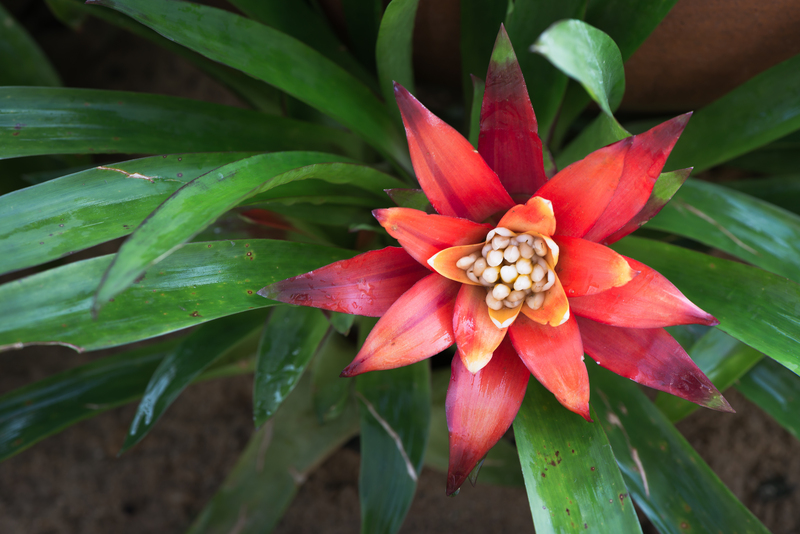Managing Heavy Rainfall in Your Garden
Posted on 27/06/2025
Heavy rainfall can be both a boon and a bane for gardeners. While it can alleviate the need for manual watering, it also poses several challenges. Standing water, root rot, and soil erosion are just some of the problems that can arise when your garden experiences heavy rainfall. In this article, we will explore practical strategies for managing heavy rainfall in your garden, the pros and cons of heavy rain, some handy tips, major takeaways, and a concise conclusion.
Understanding the Impact of Heavy Rainfall
Before diving into the management techniques, it's essential to understand how heavy rainfall affects your garden. Large amounts of water can lead to soil compaction, nutrient leaching, and plant diseases. By comprehending its impact, you can prepare and take necessary actions to protect your plants and soil.

Soil Preparation and Drainage
Proper soil preparation and effective drainage systems are the first line of defense against the adverse effects of heavy rainfall.
- Improve Soil Structure: Incorporating organic matter such as compost or well-rotted manure can improve soil structure, ensuring better water infiltration and reducing waterlogging.
- Install Drainage Systems: French drains, swales, or installing underground pipes can help redirect excess water away from garden beds.
- Raised Beds: Consider gardening with raised beds which offer better drainage compared to ground-level beds.
Plant Selection and Placement
Choosing the right plants and placing them strategically can mitigate the adverse effects of heavy rain.
- Water-Tolerant Plants: Some plants are more tolerant to wet conditions. Opting for plants like Iris, Astilbe, or Canna can be beneficial.
- Avoid Low-Lying Areas: Avoid planting in low-lying areas prone to collecting water, instead, use these areas for water-loving plants or install rain gardens.
- Spacing: Proper plant spacing allows better air circulation which helps to minimize fungal infections and rot.
Mulching and Ground Cover
Mulching: A thick layer of mulch can help regulate soil moisture, prevent erosion, and suppress weed growth. Organic mulches, like wood chips or straw, also add nutrients to the soil as they decompose.
Ground Cover Plants: Plant ground covers such as clover, vetch, or creeping thyme to help prevent soil erosion and absorb excess water.
Water Management Techniques
If despite all preventive measures, your garden still faces waterlogging, you can employ several water management techniques:
- Rain Barrels: Use rain barrels to collect and store rainwater. This not only prevents waterlogging but also provides you with a sustainable water source for drier days.
- Sump Pumps: Installing a sump pump can help in areas that frequently suffer from standing water. The pump will transfer excess water away from your garden.
Monitoring and Maintenance
Regular monitoring and maintenance of your garden can prevent long-term damage caused by heavy rain.
- Regular Inspections: Walk through your garden regularly to check for signs of waterlogging, soil erosion, or plant diseases.
- Pruning: Regularly prune plants to improve airflow which minimizes moisture retention on leaves, reducing the risk of fungal infections.
- Soil Testing: Frequent soil testing can keep you informed about nutrient levels and pH balance, allowing you to amend the soil as necessary.
Pros and Cons of Heavy Rainfall
While heavy rainfall has its challenges, it's essential to acknowledge both its advantages and disadvantages:
- Pros:
- Reduces the need for artificial irrigation.
- Can help wash away some garden pests.
- Provides essential nutrients to the soil.
- Cons:
- Can lead to waterlogging and soil erosion.
- Increases the risk of fungal infections and root rot.
- Can cause nutrient leaching, depleting the soil of essential nutrients.
Helpful Tips for Gardeners
- Install rain gauges to monitor rainfall levels and adjust your garden practices accordingly.
- Use perennials that can handle both wet and dry conditions.
- Avoid walking on wet soil to prevent compaction.
- Ensure gutters and downspouts are clean to avoid any overflow issues near your garden.

Key Takeaways
- Proper soil preparation and drainage systems are crucial for managing heavy rainfall.
- Strategic plant selection and placement can mitigate the negative effects of excess water.
- Mulching and ground cover plants can prevent soil erosion and manage moisture levels.
- Water management tools like rain barrels and sump pumps are effective in dealing with waterlogging.
- Regular monitoring and maintenance are essential to ensure the health of your garden during heavy rainfall periods.
Conclusion
Managing heavy rainfall in your garden is an ongoing process that requires preparation, strategic planning, and regular maintenance. By understanding the impacts, implementing effective drainage solutions, selecting appropriate plants, and staying vigilant with monitoring, you can protect your garden from the adverse effects of heavy rainfall while leveraging its benefits. Stay proactive and adaptable, and your garden will thrive even in the wettest conditions.




